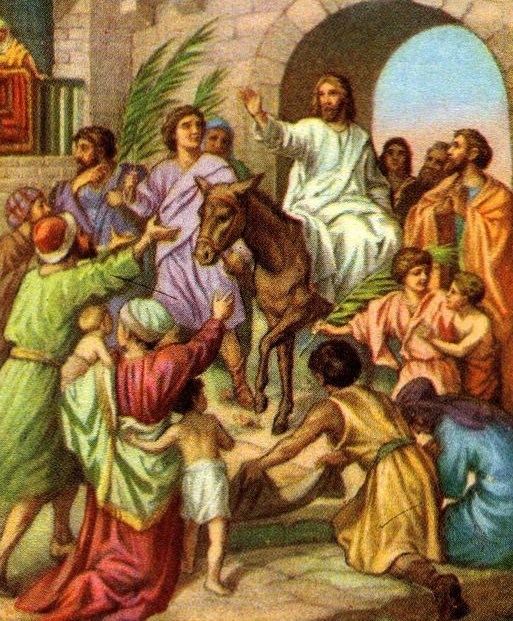 | ||
"Ride On, Ride On in Majesty!", also titled "Ride On! Ride On in Majesty", is a Christian hymn written by Henry Hart Milman in 1820. It is a Palm Sunday hymn and refers to Matthew 21:1–17 and Jesus' Triumphal entry into Jerusalem.
History
While Milman wrote "Ride On, Ride On in Majesty!" in 1820, it was not published in a hymn book until 1827 when it was published in Bishop Reginald Heber's Hymns Written and Adapted to the Weekly Church Service of the Year. This is reported to only have happened after Milman met Heber in 1823 before Heber became Bishop of Calcutta. It was described by composer Stanley L. Osbourne as "Objective, robust, confident, and stirring, it possesses that peculiar combination of tragedy and victory which draws the singer into the very centre of the drama. It is this which gives the hymn its power and its challenge". The hymn proved popular: in 1907, John Julian, in his Dictionary of Hymnology, stated it was the most popular Palm Sunday hymn in the English language at that time.
The hymn is viewed to be full of dramatic irony. The third line of the first verse "Thine humble beast pursues his road" has been disliked by some hymn book editors. In 1852 it was attempted to be changed to "O Saviour meek, pursue Thy road" and in 1855 to "With joyous throngs pursue Thy road" however both attempts received little popular attention. This led to some hymn books omitting the first verse.
There are several tunes that are used for "Ride On, Ride On in Majesty!": Hebron by Lowell Mason, Winchester New by William Henry Monk, and St Drostane. The hymn is used as a processional hymn during Palm Sunday.
